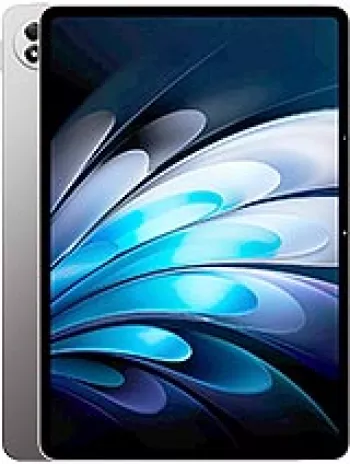
Overview of Vivo Y15 (2013)
The Vivo Y15, launched in 2013, represents an era when smartphones began gaining significant momentum in performance enhancements albeit with moderate offerings compared to today's standards. This device took a distinctive stance with its affordable pricing while delivering reliable features typical for its class during that period.
Build and Design
The Vivo Y15 sports a blend of glass and plastic construction, opting for a glass front, plastic back, and plastic frame, which gives it a balanced durability and weight advantage. With dimensions of 131.4 x 66.2 x 9 mm and a weight of 130 grams, the device is considered compact and easily manageable in one hand, catering to users who prefer smaller smartphones. The dual SIM slot supports micro-SIMs and operates in a dual standby mode, adding a layer of convenience for users needing separate lines on one device.
Display
The device comes with an IPS LCD display measuring 4.5 inches, offering fairly adequate visual real estate for typical smartphone activities such as browsing, texting, and media consumption. With a resolution of 480 x 854 pixels and a screen-to-body ratio of approximately 64.1%, the Vivo Y15 delivers a pixel density of around 218 ppi, which, while not groundbreaking, provides decent clarity and vibrant color reproduction for casual use. Scratch-resistant glass protection offers a baseline level of defense against everyday wear.
Performance
Powered by MediaTek MT6582 chipset built on 28nm technology and equipped with a quad-core 1.3 GHz Cortex-A7 CPU, the Vivo Y15 manages basic tasks with reasonable efficiency. The Mali-400MP2 GPU provides adequate graphical performance for light gaming and media playback, though more intensive applications and higher-end games may struggle due to the hardware limitations. The device runs on Android 4.2.2 (Jelly Bean), which was competitive during its time, offering a user-friendly interface and access to a broad ecosystem of applications.
Memory and Storage
The Vivo Y15 offers 4GB of internal storage complemented by 512MB of RAM, which, while minimal by today's standards, accommodated basic applications and functionalities during its release period. The inclusion of a microSDXC slot permits storage expansion, allowing users to increase their capacity and better manage media and application data.
Camera Capabilities
Photography-wise, the Vivo Y15's main camera is a 5MP shooter with autofocus capabilities paired with an LED flash to assist in low-light conditions. This setup allows users to capture 1080p video at 30 frames per second, documenting moments in reasonable quality. On the front, a 2MP selfie camera caters to basic video calling and self-portraits, supporting the user’s multimedia needs modestly.
Battery Life
The device is equipped with a removable 1900 mAh Li-Ion battery. Providing a standby duration of up to 410 hours on both 2G and 3G networks and talk time of up to 10 hours (2G) and 8 hours (3G), users could expect a balanced day-to-day performance. Music playback is significantly more enduring, reaching up to 45 hours, ideal for continual audio streaming.
Connectivity and Extras
The Vivo Y15 supports essential connectivity options, including Wi-Fi 802.11 b/g/n with Wi-Fi Direct and hotspot capabilities, Bluetooth 4.0, and GPS for navigation services. Despite the absence of modern-day NFC, the presence of FM radio, infrared port, and a microUSB 2.0 port ensures reasonable connectivity. The inclusion of a 3.5mm headphone jack aligns with classic user preferences for private audio listening. Sensor-wise, the device carries an accelerometer, proximity sensor, and compass, enhancing its operational capability.
Market Position and Pricing
Available originally in black and white color schemes, the Vivo Y15 retailed at approximately 110 EUR, placing it within a highly affordable segment conducive for budget-conscious consumers or first-time smartphone users. Despite its discontinuation, the device’s specification laid a foundational understanding of early 2010s smartphone capabilities.
Description in Retrospect
Analyzing the Vivo Y15 in today's context offers a glimpse into the rapid evolution of mobile technology over the past decade. While modest on features compared to contemporary devices, its role in enhancing accessibility and offering reliable daily usage is noteworthy. Through its practical design and simple yet effective feature set, the Vivo Y15 stands as a classic representation of transitional smartphone technology, bridging the gap between rudimentary mobile phones and the sophisticated, versatile smartphones we see today.
Key Features of vivo Y15 (2013)
- Supports GSM / HSPA network technology
- Lightweight at 130 g (4.59 oz)
- Compact design with dimensions 131.4 x 66.2 x 9 mm
- Dual SIM (Micro-SIM, dual stand-by) capability
- 4.5-inch IPS LCD display with scratch-resistant glass
- Quad-core 1.3 GHz Cortex-A7 processor
- Expandable storage via microSDXC card slot
- 5 MP main camera with LED flash and 1080p video capability
- 2 MP selfie camera
- Includes a 3.5mm headphone jack
- Wi-Fi, Bluetooth 4.0, and GPS connectivity
- FM radio and infrared port available
- Battery life supports up to 410 hours standby and up to 10 hours talk time
- Available in White and Black colors
- Affordably priced at around 110 EUR
Disadvantages of Vivo Y15 (2013)
- Discontinued status, making it difficult to find new devices or support
- Low internal storage of 4GB which is inadequate for modern usage
- Limited RAM of 512MB, affecting multitasking capabilities and overall performance
- Outdated Android 4.2.2 (Jelly Bean) operating system
- Low-resolution display with 480 x 854 pixels
- No NFC support for contactless payments and other functionalities
- Basic 5 MP main camera and 2 MP selfie camera with limited features
- Older chipset and GPU (Mediatek MT6582 and Mali-400MP2), which may impact performance
- Small 1900 mAh battery leading to potentially low battery life
- Lacks modern connectivity options like 4G LTE


View Also
More Phones
All Rights Reserved +14300 Phones © Mobilawy 2025

























